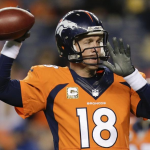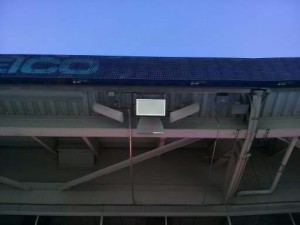For some time now, we here at Mobile Sports Report have been predicting that the NFL would eventually bring its digital assets in-house and market them to fans, for an additional fee. The first step in that process appears to have arrived today with the announcement of NFL Now, an Internet-based TV service designed to provide exclusive NFL content that includes just about everything EXCEPT live game action.
We’ll get to the game-action part later. While NFL Now, which will launch this summer, will include a lot of free content accompanied by a lot of ads, for now, what has yet to be announced is how much the NFL will try to charge its fans for access to the “good stuff,” a subscription tier called NFL Now Plus. Part of what “Plus” will provide is all the in-game highlights packages produced by the league’s media arm, as well as access to all the NFL Films archives that are available in digital format.
So how much will NFL fans pay for such archived gems? And how much will this experiment affect the NFL’s relationship with its TV rights partners? Though some fans may express disgust over the feeling of being charged even more, my guess is that many will just pay whatever it costs to have an easier way to view what matters to them — highlights and information about their teams and fantasy players, a level of customization that may be the key to NFL Now’s success. Is that worth $5 a month? $10? What would you pay for a direct pipeline to NFL content? How much TV time could that save you?
When it comes to watching highlights, sports fans everywhere know the frustration of having to sit through numerous SportsCenter segments that aren’t the ones you want to watch. (In fact, most of the modern world outside New York and Boston hates it when the Boston Red Sox and New York Yankees are both competitive, since when that happens roughly 98 percent of all ESPN highlights are Yankees, Red Sox, or blowhards talking about the Yankees and Red Sox.) If we are reading the reports of NFL Now correctly one of the service’s strengths will be allowing fans to customize their feed by team and by player, which should be nirvana for fanasty followers who often have “team” players scattered across the league. You can sign up to receive more information at this NFL page.
But the real digital asset that fans want — live streaming NFL game action — is still a big mystery and a mess when it comes to figuring out which games you can and can’t watch, and on what type of device. Right now a lot of digital-viewing confusion is tied up in NFL rights contracts, like the $1 billion deal with Verizon for NFL Mobile that gives Verizon exclusive access to live action on smartphones. That deal is why nobody could watch the Fox and CBS playoff streams on phones, and why you can’t watch NFL Mobile on tablets.
There’s also a hot mess of digital rights once fans get inside stadiums, an issue exacerbated by the fact that most NFL stadiums simply don’t yet have a wireless infrastructure that is able to handle numerous fans wanting to watch replays or live game streams. My guess on the NFL’s path to live video is that it will wait for technology to get better, which means another few years of fan frustration and confusion over how to best watch NFL content.
Will there ever be a simple way for a fan to pay a single price and have access to all the NFL content possible, no matter what device or access method? Maybe someday, but best guess is that it’s not someday soon. In the meantime, get your wallet ready for another small surcharge for NFL Now Plus.












